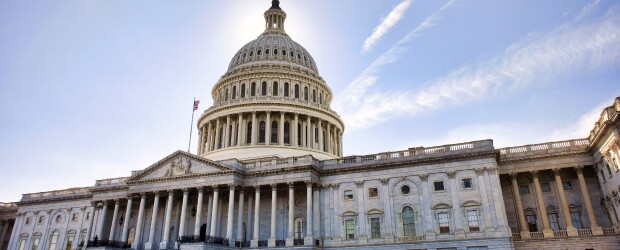Summer 2020 marked the 30th anniversary of the Americans With Disabilities Act (ADA) being signed into law by President George H.W. Bush. This landmark civil rights law prohibited discrimination against individuals with disabilities, much as the Civil Rights Act of 1964 made it illegal to discriminate against individuals based on race, sex, religion, or national origin. The ADA is one of several federal laws that have improved the access that students with disabilities have to educational opportunities.
In this post, we’ll explore the three most significant ones—Section 504 of the Rehabilitation Act, the ADA, and the Individuals with Disabilities Education Act.
These laws were planned and passed separately, years apart, and were not part of a single overall plan. Therefore, their protections and mandates overlap somewhat.
Section 504 of the Rehabilitation Act (1973)1
This was the first federal law passed to prohibit discrimination based on disability. It covers any entities that receive federal funding, including all public schools and many private ones. Under Section 504, funded schools are required to provide a Free and Appropriate Public Education (FAPE) to children with disabilities. That includes providing reasonable accommodations to their learning and school activities (including extracurricular activities) that allow students with disabilities to participate successfully. Appropriate accommodations vary tremendously depending on a student’s needs. They range from physical modifications, such as accessible restroom stalls, to learning accommodations, such as visual aids or note-taking assistance, to less tangible supports, such as behavior intervention plans. When a school determines that a student qualifies for accommodations under Section 504, the document in which the student’s accommodations are spelled out is typically referred to as a “504 Plan.”
The Americans with Disabilities Act2
Passed in 1990, the ADA made it illegal for any entity that offers services or goods to the public to discriminate against someone based on a disability. That effectively extended many student rights under Section 504 to private schools and colleges that do not receive federal funding. The ADA requires that “reasonable accommodations” be made for those with disabilities and that public and commercial facilities be made accessible to all. This broad-reaching law protects anyone with “a physical or mental impairment which substantially limits one or more life activities,” and is not limited to specific categories of disability. Its protections for individuals with disabilities are lifelong, extending through post-secondary school, employment, and community settings.
Both the ADA and Section 504 are antidiscrimination laws that protect the rights of students with disabilities. They do not, however, provide any funding to schools.
The Individuals with Disabilities Education Act (IDEA)3
Known from 1975 to 1990 as the Education for All Handicapped Children Act, the IDEA provides funding to states for the education of students with disabilities. As a condition of this funding, however, it mandates that schools provide children with disabilities access to a Free and Appropriate Public Education (FAPE) in the Least Restrictive Environment (LRE). This means they must be educated with their non-disabled peers (with any appropriate services, accommodations or modifications provided) “to the maximum extent appropriate.” Prior to the passage of this law, students with disabilities were seldom educated in their neighborhood schools, much less in inclusive classrooms.
While the IDEA’s eligibility standards are narrower than the ADA’s or Section 504’s—the student must be found eligible in one of 13 specific categories—it guarantees special education and related services to qualifying students from birth to age 21 or high school graduation. The plan in which a student’s services and accommodations under the IDEA are spelled out is called that student’s Individualized Education Program (IEP).
According to Dr. Cynthia Mruczek, who teaches disability law courses in KU’s Department of Special Education, it is “vital that educators consider both the spirit and the letter of the law when making decisions about practices designed to serve students with disabilities and their families.” Special education teachers and related service providers are often assumed to have a deep understanding of the law and its implications for schools.
“An adherence to the spirit of the law,” says Dr. Mruczek, who leads our online Graduate Certificate program in Leadership in Special and Inclusive Education, “pushes us to fully embrace the intent of these laws, which originated as efforts to redress the marginalization and limitations placed upon individuals with disabilities throughout society.”
Enrich the lives of students with disabilities.
The KU online master’s program in special education, one of the nation’s best, can help you fully support your students. Choose your specialty—Autism Spectrum Disorder, Leadership in Special and Inclusive Education, High Incidence Disabilities, or Secondary Special Education and Transition—and use your expertise to help special education students develop academic and life skills.
- Retrieved on September 4, 2020 from greatschools.org/gk/articles/section-504-2/
- Retrieved on September 4, 2020 from adata.org/factsheet/disability-rights-laws-public-primary-and-secondary-education-how-do-they-relate
- Retrieved on September 4, 2020 from fas.org/sgp/crs/misc/R44624.pdf


